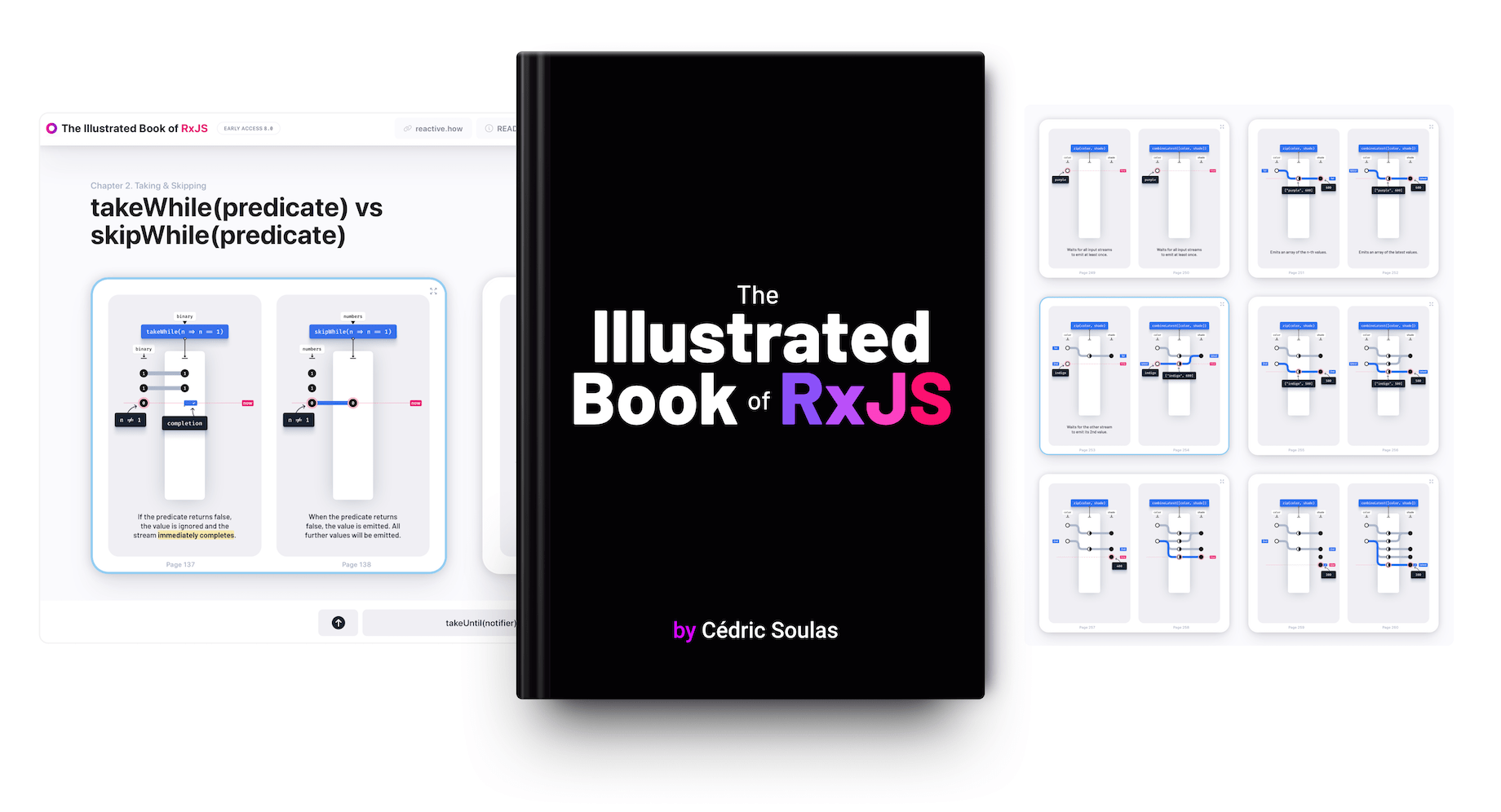take
accepts
1 input stream,
an amount
-
❯When the input stream emits its n-th value:
- if n <
amount, the value is emitted - if n ==
amount, the value is emitted and the stream immediately completes
- if n <
returns
a new stream of at most amount values
filter
accepts
1 input stream,
a predicate function
-
❯When the input stream emits a value, it is given to the
predicate:- If the predicate returns
✔ true, the value is emitted - Otherwise, the value is ignored
- If the predicate returns
returns a new stream of filtered values
Revised on Monday, 8 Oct. 2018
take
❚ take returns a new stream of at most amount values:
- When the input stream emits its n-th value:
- if n < amount, the event can pass
- if n == amount, the event can pass and the stream immediately completes
Stream completion
What does “the stream completes” mean? As a reminder, a stream is a sequence of events over time. And you can subscribe to a stream, using a listener. Let’s dive into the details now:
- A stream can emit three kinds of events:
- values
- an
× error: e - a
◉ completenotification
- After an
× error: eor a◉ completenotification, nothing else is emitted by the stream. - A listener can receive those three kinds of events. So, it can consume the values, handle an error and act upon completion of the subscribed stream.
See also

Freelance Developer Advocate. Motion graphics with code. JavaScript and Elm. cedricsoulas.com

Join the Newsletter
Receive my latest news, product updates and programming visualizations. You can unsubscribe at any time.

